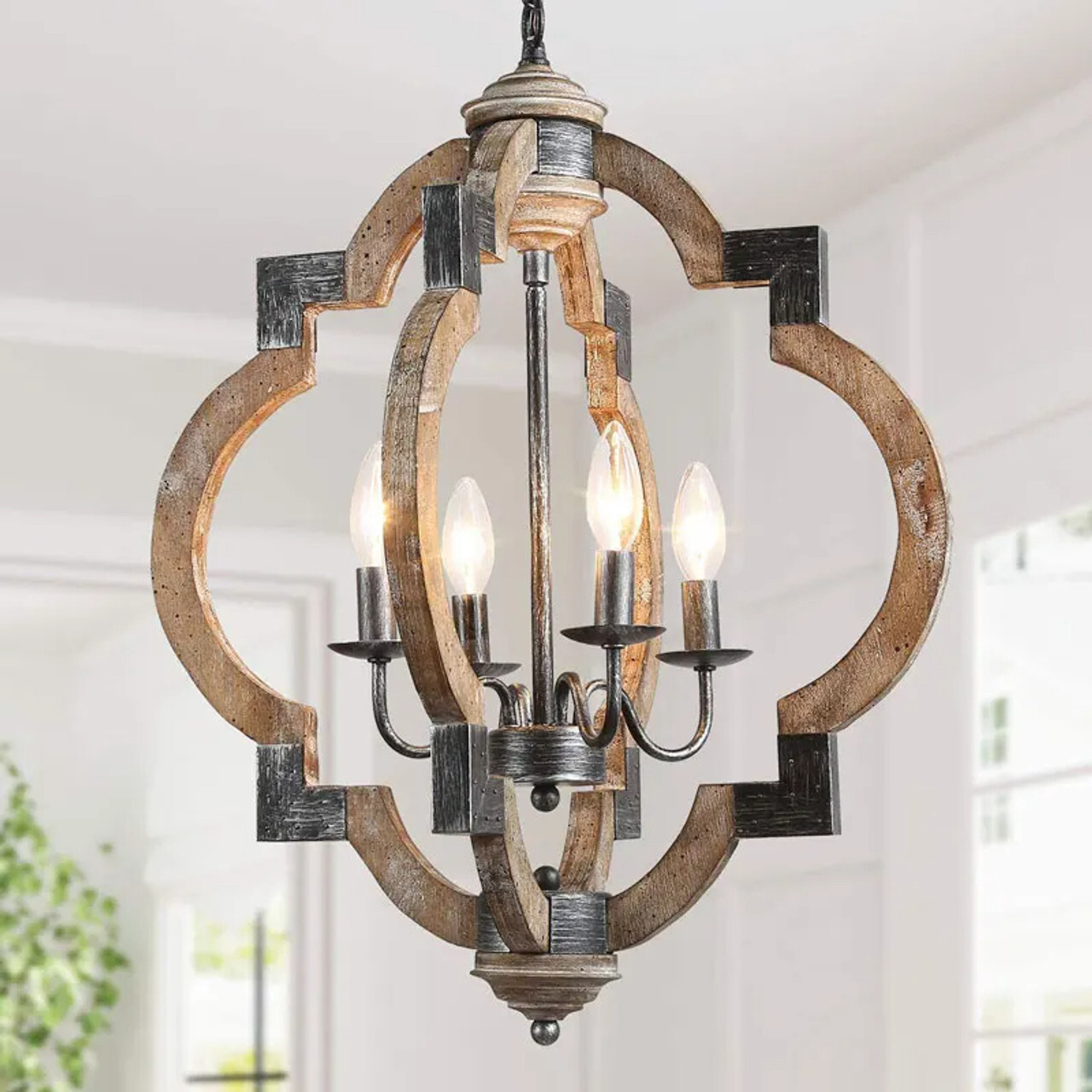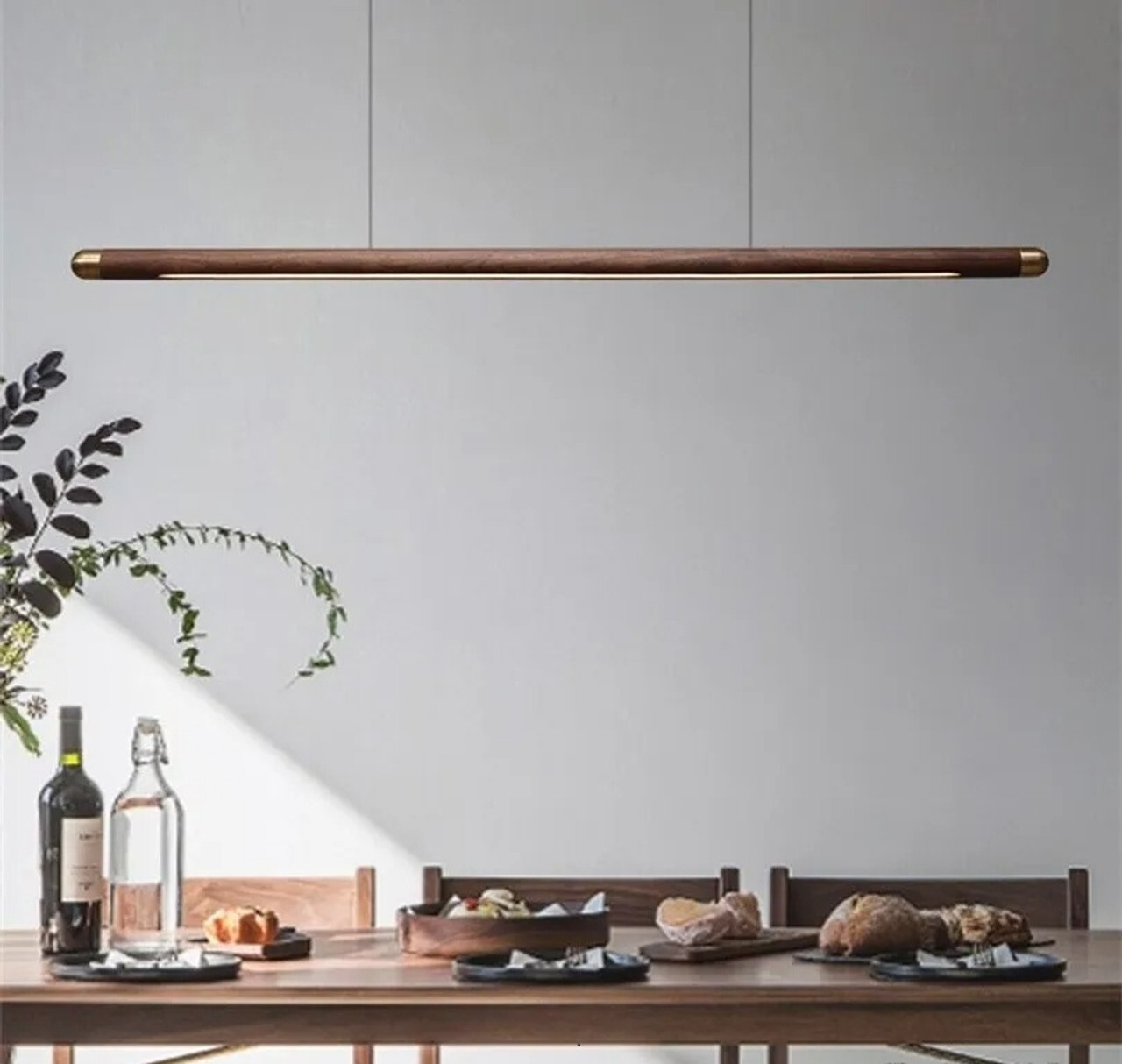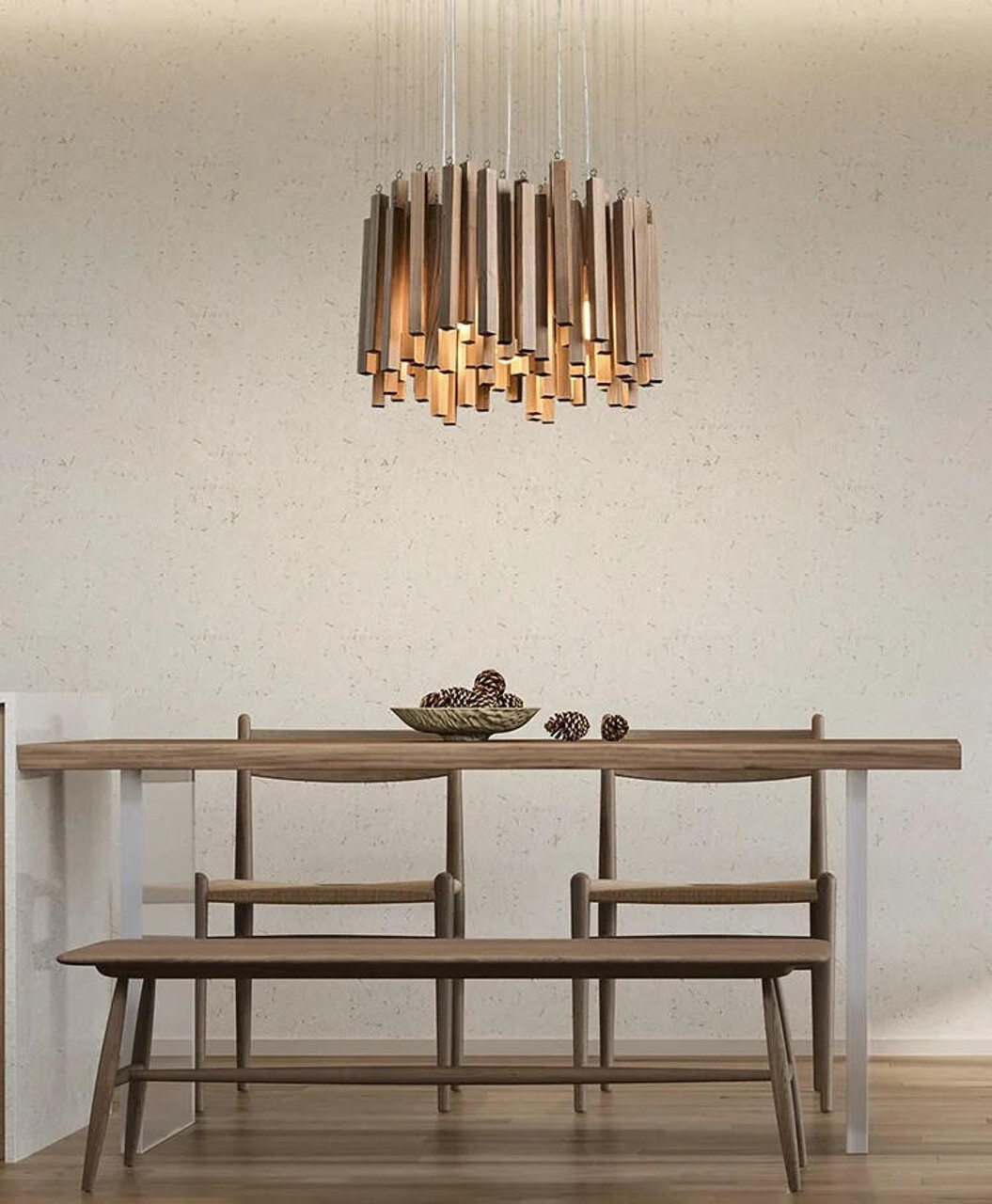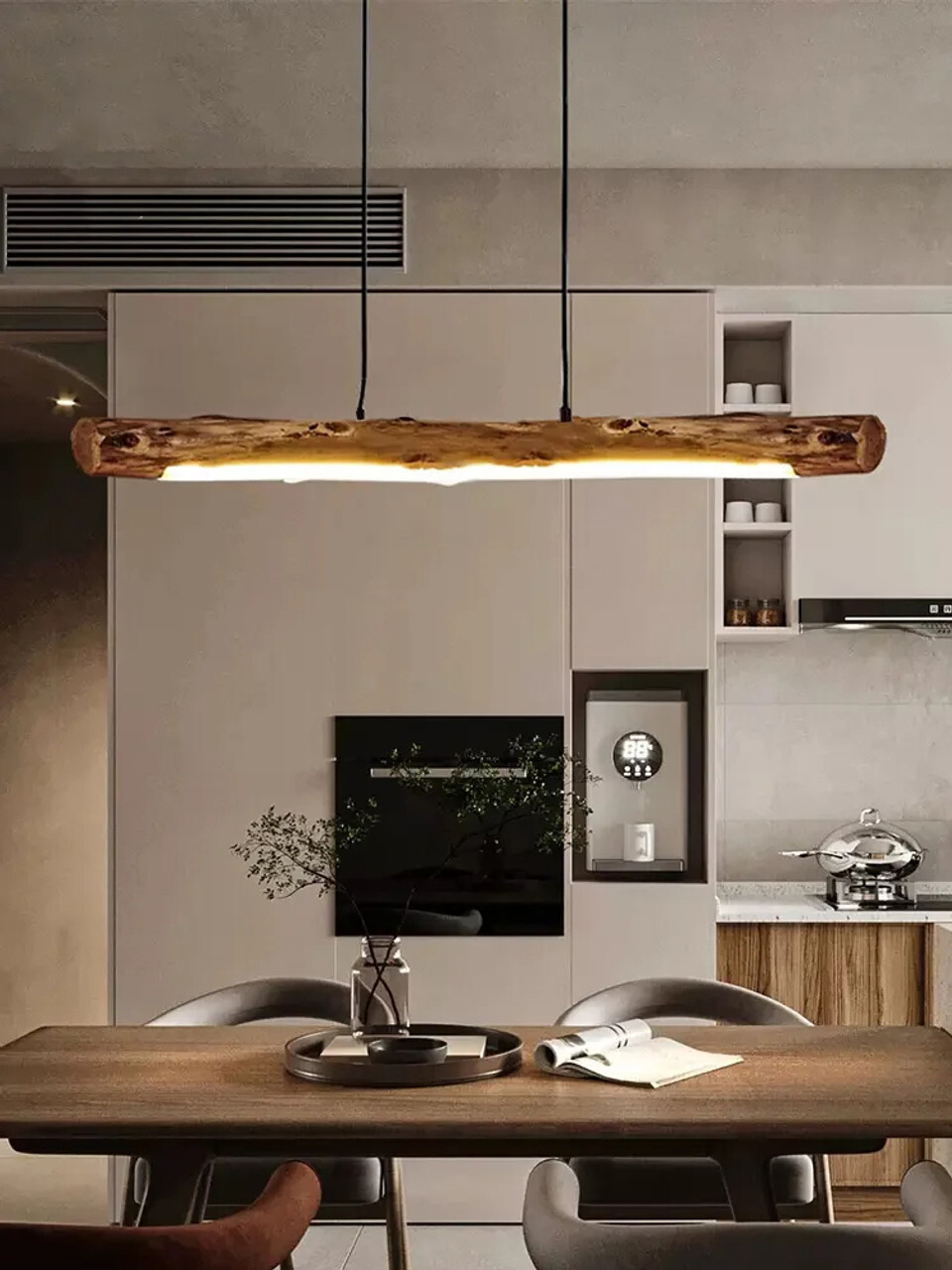Why Wood Interiors Are Making a Bold Comeback in Modern Homes
Posted by Alessio Rossi - Interior Designer on May 14, 2025
Wood has long been a staple in interior design, symbolizing warmth, tradition, and natural beauty. However, in recent years, the trend towards minimalist and industrial styles led to a decline in wood’s prominence. Today, that trend is reversing, and wood interiors are making a bold comeback in modern homes. This resurgence can be attributed to several key factors, from sustainability and biophilic design to the versatility and timeless appeal of wood itself.
The Appeal of Natural Materials
One of the primary reasons for the revival of wood interiors is the growing preference for natural, organic materials. As homeowners increasingly seek to bring the outside in, wood provides a perfect medium. Its earthy tones and natural textures create a sense of warmth and tranquility that synthetic materials often lack.
Moreover, the biophilic design trend — which emphasizes connecting interiors with nature — has further fueled the demand for wood. By incorporating wood elements, designers can evoke a calming, natural atmosphere that fosters well-being and relaxation. This concept is particularly relevant in urban areas, where the connection to nature may feel distant.
Sustainability and Eco-Conscious Living
The shift towards sustainable living has also played a pivotal role in wood’s resurgence. Unlike synthetic materials, wood is renewable, biodegradable, and has a lower carbon footprint. When sourced responsibly from managed forests, wood can be an eco-friendly choice for interior design.
Reclaimed wood, in particular, has gained popularity for its rustic appeal and environmentally friendly credentials. By repurposing old wood beams, flooring, and furniture, homeowners can reduce waste while creating a unique, character-filled aesthetic. Additionally, many companies now offer sustainable wood options, certified by organizations such as the Forest Stewardship Council (FSC), ensuring that consumers are purchasing ethically sourced materials.
Versatility in Design
Another factor driving the comeback of wood is its incredible versatility. Whether it’s oak, walnut, pine, or bamboo, each type of wood brings a distinct character and texture to a space. From Scandinavian-inspired light woods to deep, rich mahogany, the variety of wood tones allows for endless design possibilities.
Wood can be incorporated into virtually any room, from rustic wooden beams in the living room to sleek cabinetry in the kitchen. Additionally, it can be stained, painted, or left unfinished, offering a range of finishes to suit different design preferences. Custom woodwork, such as intricately carved wall panels or bespoke wooden furniture, can also serve as focal points, elevating the overall aesthetic of a space.
Enhancing Warmth and Comfort
Modern homes often emphasize open, airy spaces with minimalist aesthetics. While this style can feel clean and contemporary, it can also come across as cold or impersonal. Wood interiors provide a natural counterbalance, infusing warmth and coziness into even the most minimalistic spaces.
For example, a living room with white walls and concrete flooring can be instantly softened with a wooden coffee table, bookshelves, or wall paneling. Similarly, wooden flooring can transform a stark bedroom into a warm, inviting retreat. This is particularly effective in spaces with ample natural light, where the wood’s grain patterns and warm tones can be accentuated.
Statement Wood Features
Beyond floors and furniture, wood is also making a statement in more unexpected areas. Accent walls, ceiling beams, and even entire bathrooms are being clad in wood to create visual impact and textural interest. Modern wood paneling, for instance, can be arranged in geometric patterns or left in its natural, raw state for a more rustic look.
In kitchens, wooden cabinetry is being paired with sleek, modern countertops to achieve a balanced aesthetic that blends contemporary style with natural warmth. Meanwhile, wood-clad staircases, railings, and mantels are being used to add architectural interest to otherwise plain spaces. Incorporating wood in less traditional areas, such as ceilings or bathrooms, can create a striking contrast, adding depth and dimension to a room.
The Timelessness of Wood
Trends come and go, but wood remains a classic choice for interior design. Its durability ensures that it can withstand the test of time, both in terms of aesthetics and functionality. Unlike trendy materials that may quickly become outdated, wood has a timeless quality that can adapt to changing design styles.
Moreover, wood ages beautifully, developing a rich patina over time. This natural aging process adds depth and character, making wood elements more charming and visually appealing as they mature. Additionally, aged wood can be refinished, stained, or painted to refresh its appearance, ensuring that it continues to suit evolving design tastes.
Wood in Commercial Spaces
The resurgence of wood is not limited to residential interiors; it is also making a strong comeback in commercial spaces. Offices, restaurants, and retail stores are incorporating wooden elements to create warm, welcoming atmospheres that contrast with the often sterile look of contemporary design. Wood-paneled walls, reclaimed wood countertops, and wooden seating are being used to infuse character and authenticity into these spaces.
In corporate settings, wood can be strategically used to create focal points, such as reception desks or feature walls. Additionally, wooden partitions can provide functional yet stylish dividers that maintain the open-plan feel of modern office layouts.
The Role of Technology in Wood Design
Modern technology has expanded the possibilities of wood design. Advanced wood treatment methods, such as thermal modification, enhance wood’s durability and resistance to moisture. Additionally, CNC machining and laser cutting enable designers to create intricate wood patterns and shapes that were previously impossible.
Technology has also facilitated the rise of engineered wood products like laminated veneer lumber and cross-laminated timber, offering sustainable and structurally sound options for modern construction and design.
Cultural and Emotional Impact of Wood
Wood is not just a design choice; it carries cultural and emotional significance. In many cultures, wood is associated with warmth, comfort, and a connection to nature. Its organic, tactile quality can evoke a sense of calm and grounding, making it a preferred choice for spaces intended to promote relaxation, such as spas, bedrooms, and living rooms.
Conclusion
As homeowners seek to create more inviting, nature-inspired interiors, the resurgence of wood in modern design makes perfect sense. Its sustainability, versatility, and enduring beauty make it an ideal choice for those looking to infuse warmth and character into contemporary spaces. Whether it’s through reclaimed wood furniture, rustic beams, or sleek wooden cabinetry, wood’s comeback is proving that some design elements never go out of style.
With the right approach, wood can be used to make bold design statements, create intimate nooks, and even enhance acoustics. The resurgence of wood interiors reflects a broader desire to reconnect with nature and prioritize sustainable, enduring materials in design. And with countless resources available through online retailers finding the perfect finishing touches is easier than ever.
10 FAQ on "Why Wood Interiors Are Making a Bold Comeback in Modern Homes"
-
Why is wood making a comeback in modern interior design?
Wood is making a significant resurgence in modern interior design due to its natural warmth, sustainability, and timeless appeal. As more homeowners and designers move away from cold, industrial aesthetics, wood provides a comforting, organic feel that adds character and texture to any space. Additionally, the biophilic design trend, which emphasizes reconnecting interiors with nature, has fueled wood’s popularity. The rich grains, earthy tones, and diverse textures of wood create a visually inviting atmosphere that other materials often lack, making it an ideal choice for those seeking both style and substance in contemporary home design. -
What types of wood are commonly used in modern interiors?
A variety of wood types can be found in modern interiors, each offering unique qualities in terms of appearance, texture, and durability. Oak and walnut are popular for their rich grains and robust structures, making them ideal for flooring, cabinetry, and furniture. Pine and maple are more affordable options that lend themselves well to Scandinavian and minimalist designs due to their lighter tones. Bamboo, a sustainable and rapidly renewable resource, is increasingly used in eco-conscious designs. Reclaimed wood, sourced from old barns, factories, or boats, adds rustic charm and a sense of history, while exotic woods like teak and mahogany bring a luxurious, high-end finish to modern interiors. -
How does wood contribute to sustainable design?
Wood is considered one of the most sustainable building materials when sourced responsibly. Unlike synthetic materials, wood is biodegradable and can be recycled or repurposed, reducing landfill waste. Additionally, trees absorb carbon dioxide, and when wood is used in interiors, that carbon remains stored, mitigating greenhouse gas emissions. Reclaimed wood further enhances sustainability by repurposing old materials, thus preventing deforestation. Certifications like the Forest Stewardship Council (FSC) ensure that the wood is harvested ethically, supporting responsible forest management. Choosing sustainably sourced wood also encourages the use of native species, reducing the carbon footprint associated with long-distance shipping. -
What are some popular wood finishes for modern interiors?
Wood finishes play a critical role in defining the overall aesthetic of a space. Matte finishes are popular in minimalist and Scandinavian designs, creating a soft, understated look that emphasizes the natural grain of the wood. Glossy finishes, on the other hand, lend a more polished, contemporary feel, often seen in modern kitchens and living areas. Stained finishes allow for customized hues, from rich mahogany to light ash, enabling homeowners to match wood tones with existing decor. Painted finishes can be used to create bold, eye-catching statements or to refresh old wooden furniture. Finally, natural or raw finishes maintain the organic appearance of the wood, showcasing its grain patterns and imperfections for a more rustic, authentic look. -
How can wood be incorporated into minimalist designs?
Wood is a versatile material that can seamlessly integrate into minimalist designs while maintaining warmth and visual interest. Opt for clean-lined wooden furniture with simple, geometric shapes to keep the look uncluttered. In living spaces, a single statement piece, such as a wooden coffee table or console, can provide a focal point without overwhelming the space. Wall paneling in light-toned woods like birch or pine can add texture and depth to an otherwise stark room. In kitchens, minimalist wooden cabinetry paired with matte black hardware creates a sleek yet welcoming aesthetic. Additionally, wooden flooring with minimal grain patterns can ground the design, tying together various elements for a cohesive, minimalist look. -
What are some unexpected places to use wood in a home?
Wood is traditionally associated with floors and furniture, but it can also be used creatively in unexpected areas to add warmth and visual appeal. In bathrooms, wooden vanities and ceiling beams can create a spa-like, organic atmosphere when properly sealed against moisture. Wooden ceilings or soffits can bring warmth to high, open spaces, especially in contemporary loft-style homes. Staircases with wooden treads or risers can serve as striking architectural features, while wooden room dividers or slatted screens provide subtle visual separation without blocking light. Even kitchens can benefit from wood accents, such as butcher block countertops or wooden range hoods, adding a natural contrast to stone or metal finishes. -
Is wood suitable for bathrooms and kitchens?
Yes, wood can be successfully used in moisture-prone areas like bathrooms and kitchens, but it requires proper treatment and maintenance. In bathrooms, sealed hardwood or engineered wood with water-resistant finishes is ideal for vanities, shelving, and even flooring. Marine-grade sealants protect wood against water damage and warping. In kitchens, wood cabinetry can be paired with water-resistant countertops, and hardwood flooring can be treated with oil-based polyurethane for added durability. Bamboo, being naturally water-resistant, is also a great choice for these areas. Regular maintenance, such as resealing surfaces and promptly wiping up spills, will help maintain the wood’s integrity and appearance. -
How can technology enhance wood design?
Advancements in technology have expanded the possibilities of wood design, making it more versatile and durable than ever. CNC (Computer Numerical Control) machining allows for precision cutting and intricate detailing, enabling designers to create complex wooden patterns and shapes. Thermal modification enhances wood’s resistance to moisture and insects, making it suitable for bathrooms, kitchens, and even outdoor applications. Engineered wood products, such as cross-laminated timber (CLT) and laminated veneer lumber (LVL), offer structural strength while minimizing waste. Laser cutting technology can etch intricate designs into wooden panels, allowing for highly customized and artistic installations that elevate the overall aesthetic of a space. -
How can wood create a statement feature in a modern home?
Wood can be used to create striking statement features that add both visual and architectural interest to a home. In living rooms, a wood-clad accent wall with vertical or horizontal slats can serve as a bold focal point. Suspended wooden beams can draw the eye upward, creating a sense of height and grandeur in open-plan spaces. Custom wooden staircases with sculptural balustrades can act as art pieces in themselves. In kitchens, a reclaimed wood island or bar area can introduce rustic charm, contrasting beautifully with modern countertops and fixtures. Even bathrooms can incorporate statement wood elements, such as a freestanding wooden vanity or a wood-paneled ceiling. -
Where can homeowners find unique wood fixtures and furniture?
Homeowners seeking unique wood fixtures and furniture have a variety of options to explore. Online light fixture stores and online lighting retailers offer curated collections of wooden lighting, including pendant lights, sconces, and chandeliers in a range of finishes and styles. For custom wood pieces, local artisans and woodworking studios can craft bespoke furniture tailored to specific design needs. Reclaimed wood suppliers are ideal for sourcing one-of-a-kind planks and beams with rich character and history. High-end furniture stores and design showrooms also carry exclusive wood collections, allowing homeowners to invest in statement pieces that elevate the overall decor of their space.
Hi! We’re the Jas Writing Team — if you enjoyed this article, why not buy our writer a coffee? Every tip goes straight to the person behind the words — and yes, we really do spend it at our local coffee shop. Your support keeps the ideas (and lattes) flowing. Thank you!





